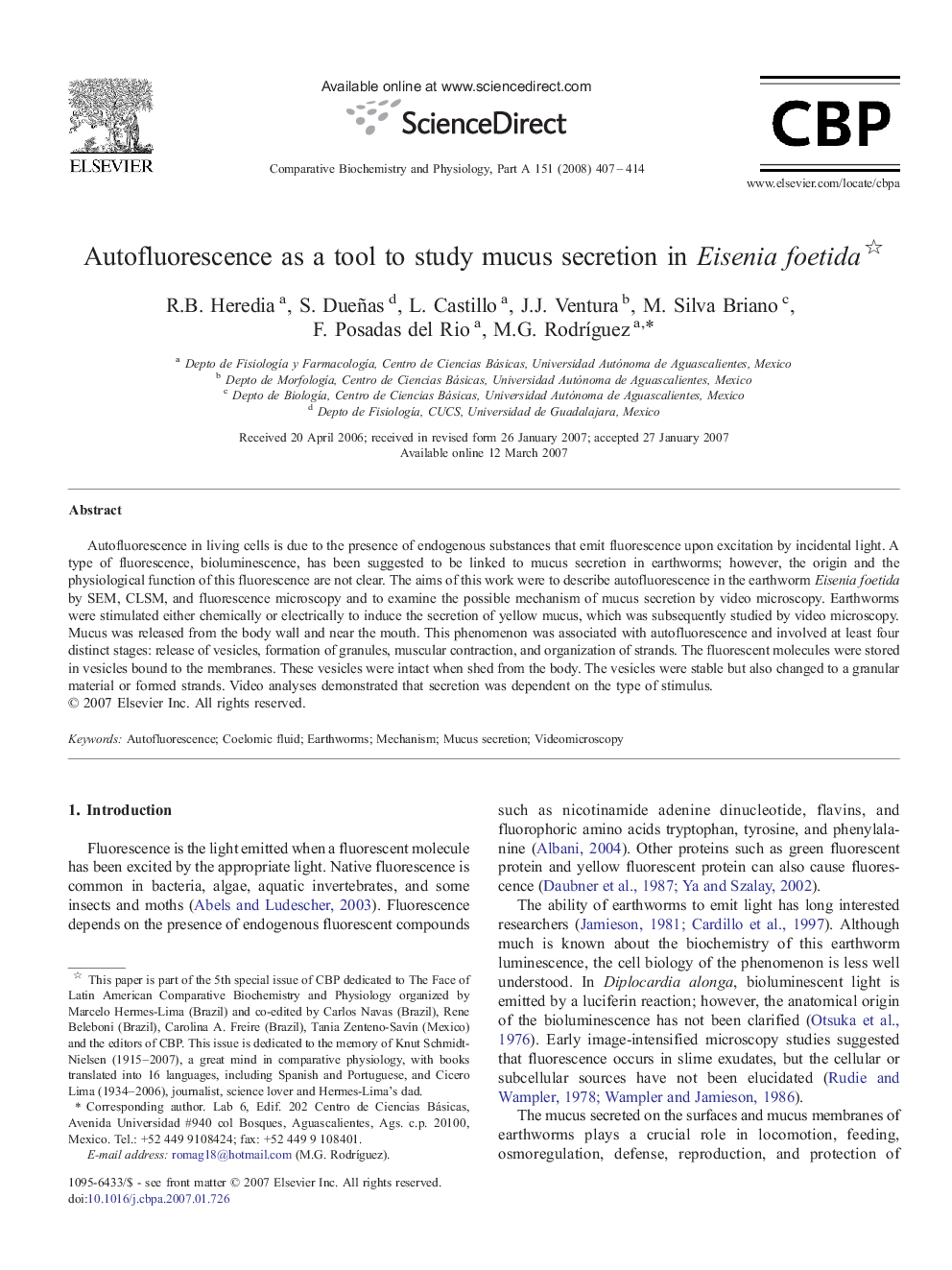| Article ID | Journal | Published Year | Pages | File Type |
|---|---|---|---|---|
| 1974690 | Comparative Biochemistry and Physiology Part A: Molecular & Integrative Physiology | 2008 | 8 Pages |
Autofluorescence in living cells is due to the presence of endogenous substances that emit fluorescence upon excitation by incidental light. A type of fluorescence, bioluminescence, has been suggested to be linked to mucus secretion in earthworms; however, the origin and the physiological function of this fluorescence are not clear. The aims of this work were to describe autofluorescence in the earthworm Eisenia foetida by SEM, CLSM, and fluorescence microscopy and to examine the possible mechanism of mucus secretion by video microscopy. Earthworms were stimulated either chemically or electrically to induce the secretion of yellow mucus, which was subsequently studied by video microscopy. Mucus was released from the body wall and near the mouth. This phenomenon was associated with autofluorescence and involved at least four distinct stages: release of vesicles, formation of granules, muscular contraction, and organization of strands. The fluorescent molecules were stored in vesicles bound to the membranes. These vesicles were intact when shed from the body. The vesicles were stable but also changed to a granular material or formed strands. Video analyses demonstrated that secretion was dependent on the type of stimulus.
